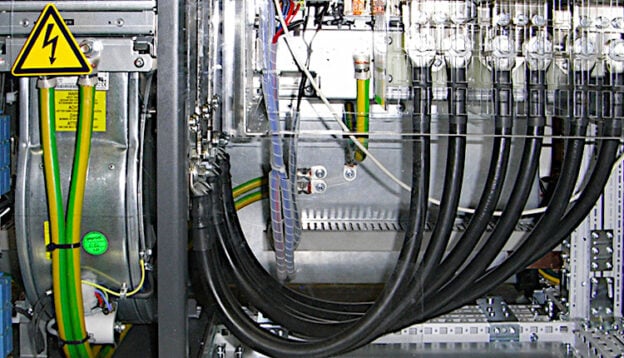Course Description
This course provides an advanced knowledge in grounding and fault mitigation in power systems. It covers the basic grounding and protection concepts, short-circuit in isolated networks, phenomena associated with ground faults, grounding of low-voltage and medium-voltage systems, grounding system circuits, and finally specifications and ratings of grounding devices.
The course consists of a total of 52 lessons and has a duration of 3 hours and 5 minutes.
The course is intended for both lower- and upper-level undergraduate students studying power system, design, and measurement of grounding system, as well as a reference for power system engineers.
This course is organized into seven chapters. Chapter 1 “Basic Concepts” deals with the course preview, and the preview of short-circuit current calculations. Short-circuit in isolated networks are discussed in Chapter 2.
Chapter 3 covers Phenomena associated with ground faults (such as transient overvoltages, arcing ground, false motor starting, etc.).
Chapter 4 includes the grounding of low voltage systems. In this chapter, we’ll discuss experience-based guidelines for grounding – Industrial systems and transmission lines, natural capacitances, grounding transformers, methods of grounding, etc.
Chapter 5 presents facts on grounding of medium voltage systems by diving into residual relaying scheme, ground sensor scheme, neutral ground scheme, and other important topics.
Chapter 6 describes different grounding system circuits and guidelines. Grounding of systems in hazardous areas and ferroresonance phenomenon are also covered in this Chapter. Specifications and ratings of grounding devices in Chapter 7.
This course will offer both students and practice engineers the fundamental concepts in grounding and fault mitigation in power systems.
This course will teach you the following:
- A quick overview of the fundamentals of short-circuit current calculations.
- Short-circuit currents in isolated networks.
- Earthing or grounding impedance.
- How fault currents can be controlled by adjusting the neutral grounding method.
- Ground fault in isolated, unearthed, systems.
- Transient overvoltages and how they occur in ungrounded systems.
- Important effects that can occur when a ground fault happens.
- An important phenomenon known as the Second Short Circuit
- The phenomenon of arcing ground—what it is, how it happens, and why it can be dangerous.
- The phenomenon of false starting in motors.
- Grounding in low-voltage systems.
- Primary objectives of system grounding.
- Experience-based guidelines for grounding.
- Natural capacitances in electrical networks.
- Grounding transformers and their roles in electrical systems.
- How grounding transformers can be used to limit fault current.
- The Zigzag Grounding Transformer and its key considerations.
- Grounding Methods.
- Ungrounded Networks.
- Direct and Effective Grounding.
- High Resistance Grounding.
- Final recommendation for the types of grounding used in low-voltage networks.
- Grounding methods used in medium-voltage systems.
- Ungrounded Systems.
- Solid Grounding.
- Low-Resistance Grounding.
- High Resistance Grounding.
- Reactance Grounding.
- Ground Fault Neutralizer Grounding.
- Protection Schemes used in medium-voltage systems.
- Residual Relaying Scheme.
- Ground Sensor Scheme.
- Neutral Ground Scheme.
- Grounding systems in hazardous areas.
- Grounding and the ferroresonance phenomenon.
- Ratings and specifications of grounding devices.
- The steps for selecting and determining ratings for the grounding by reactance and grounding with a Zigzag transformer.
Course Overview
- Basic Grounding and Protection Concepts
- Short-Circuit in Isolated Networks
- Phenomena Associated with Ground Faults
- Grounding of Low-voltage Systems
- Grounding of Medium-voltage Systems
- Grounding System Circuits
- Specifications and Ratings of Grounding Devices
Who Is This Course For
- Engineering college students and students of technical institutes
- Engineers and technicians working in power stations and distribution networks
- Specialists involved in the study and mitigation of short-circuit currents in electrical power networks
Requirements
- Basic knowledge of AC circuits
Downloadable course documents
After purchasing the course, students can download the following documents related to the course:
- A Guide to Substation Earthing Design and Understanding Dangerous Voltages (PDF)
- Practical Earthing Handbook for Power Engineers (PDF)
- A good guide on how the earthing system should be correctly implemented (PDF)
- Earthing system calculation for 132/11 kV, 1×40 MVA substation of steel factory (PDF)
- Earthing system design tool for low voltage installations (XLSX)
Course Content
1. Basic Grounding & Protection Concepts
About Instructor



